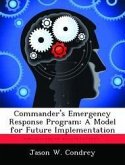Since the 19th century, aircraft have played a significant role in military operations worldwide. From the use of observation balloons in the American Civil War, to the introduction of jet-powered aircraft in World War II, to the advent of remotely piloted aircraft (RPA) like the Reaper and Global Hawk, the role of aircraft has been ever expanding as technology advances in our nation's Air Force. One of the initial roles of military of aircraft was to provide intelligence, surveillance and reconnaissance (ISR) to battlefield commanders. That role continues today in a variety of situations. One of those situations is disaster response in the continental United States. US Air Force aircraft and sensor technology can provide detailed imagery and video of affected areas to assist with relief efforts. These aircraft can also be used to assist in another critical area of disaster response: communications restoral. Multi-role aircraft, manned, unmanned, and remotely piloted can be used to provide this ISR capability and provide communications service to an area affected by a disaster. Responding to a US Northern Command requirement, this research paper will explore which types of airborne platforms, to include airships, tethered aerostats, traditional heavier than air remotely piloted platforms, and others, can provide emergency communications and wide area surveillance both prior to a disaster situation, and during the US Government's response operations. The US Government response to Hurricane Katrina will be used as a case study to determine exactly what communications and ISR capabilities will be required to support disaster response operations. Lessons learned from Hurricane Katrina will also be explored.








